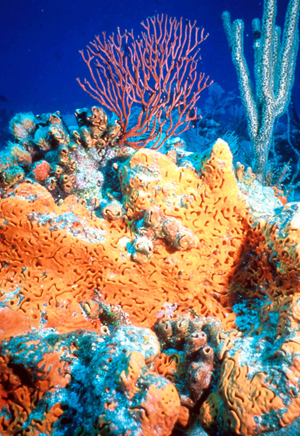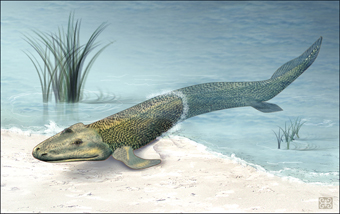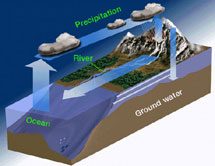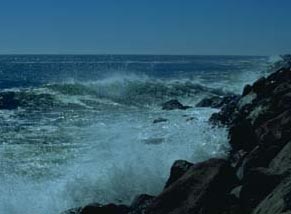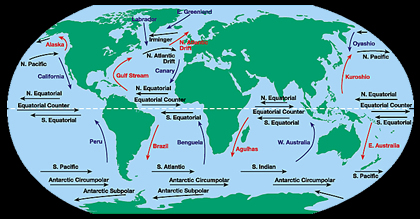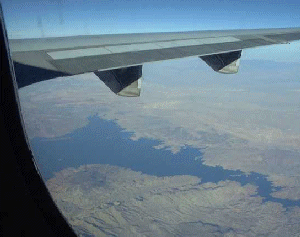Click on image for full size
Courtesy of NOAA
Life in the Shallow Ocean
At the bottom of the ocean, in areas shallow enough for sunlight to reach them, there are thousands of types of living things.
Where the shallow ocean floor is sandy or muddy, there may be crabs darting quickly across the sediment and slow-moving sea stars and snails. Crabs wearing snail shells are known as hermit crabs. They can also be found on the sand. Some fish and sharks prefer to live near the bottom swimming just above the sand. Other animals live buried in the sand or mud, such as clams, worms, and sea urchins with short spines. Sea grass, which looks like a lawn of tall grass, can also grow in sand and mud.
Where the shallow ocean floor is rocky and the water is cold, kelp forests can form. These are places where large brown algae called kelp grow from the ocean floor all the way to the surface of the water. The kelp can be as tall as 20 meters (66 feet). The huge kelp creates an underwater forest where many different animals live. Sea lions swim between the kelp and catch fish. Playful sea otters eat invertebrates like urchins and abalone.
In tropical, warm water, coral reefs grow on rocky areas of the shallow ocean floor. Coral reefs are named after the coral animals whose skeletons make up most of the reef rocks, but reefs are also home to hundreds of other types of animals and algae. Many species of colorful fish can be found swimming through reefs. Invertebrates like sponges, molluscs, sea fans, worms, crabs, and echinoderms are common too.
While different species are found in different areas of the shallow ocean, the general types of animals, algae, and plants that you will find in different places can be similar. For example, even though the species of kelp is not the same, kelp forests are found in several different ocean basins including the Atlantic Ocean, Pacific Ocean, and the Southern Ocean.


